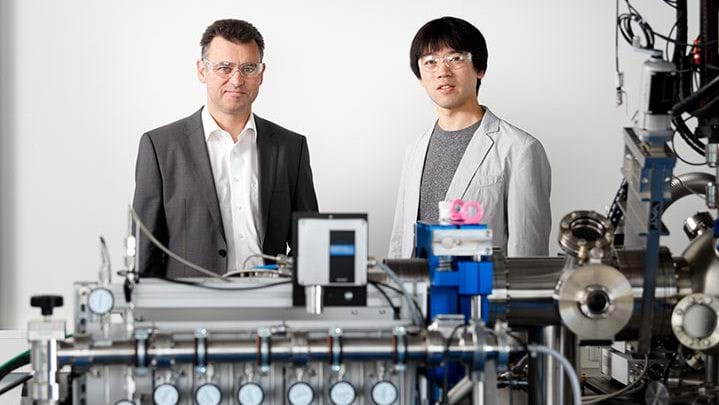New catalyst reduces carbon dioxide emissions in coal-to-liquids process

A CATALYST has been developed that almost eliminates carbon dioxide emissions in the Fischer-Tropsch process in the conversion of coal-to-liquid fuels.
In the coal-to-liquids (CTL) process, the coal is first converted to syngas. It then undergoes the water-gas shift (WGS) reaction, which removes some of the carbon monoxide (CO) from the syngas by converting it to CO2, and this is followed by Fischer-Tropsch (FT) to create the liquid fuels. The iron-based catalysts currently used in the FT reaction convert 30% of the CO into CO2 which is released into the atmosphere. Capturing the CO2 at this stage is extremely challenging, as the gas mixture contains many components such as hydrocarbon gases which are difficult to separate from the CO2.
Cobalt-based catalysts are a possible alternative to iron-based catalysts as they mainly produce water rather than CO2, but they are expensive. Iron-based catalysts are also preferred due to their tolerance to sulfur and high operational flexibility.
Researchers in the Netherlands and China have now developed an iron-based catalyst that produces almost no CO2 in the FT reaction. They discovered that CO2 is released when an impure iron catalyst is used so they produced a pure form of an epsilon iron carbide which generates very little CO2. These types of catalysts had previously had not been stable enough for the FT process, but the researchers developed a new method to produce it by carefully controlling the pre-treatment and carburisation conditions, where iron absorbs carbon during a heating process. The new catalyst remains stable under industrial processing conditions of 2.3m Pa and 250oC for at least 150 hours.
While the CO2 can be almost eliminated from the FT reaction, CO2 is still produced during the preceding WGS reaction. However, it is much easier to remove CO2 from the WGS stage, and carbon capture after the WGS reactor is already a proven technology. Capturing the remaining CO2 would make the CTL process much cleaner.
"We are aware that our new technology facilitates the use of coal-derived fossil fuels,” said lead researcher Emiel Hensen of Eindhoven University of Technology. “However, it is very likely that coal-rich countries will keep on exploiting their coal reserves in the decades ahead. We want to help them do this in the most sustainable way."
The new catalyst will reduce operating costs by around €25m/y (US$28.7m/y) for a typical CTL plant. The researchers also expect that it could be used with waste or biomass as a feedstock in the future rather than coal.
Science Advances http://doi.org/cv94
Recent Editions
Catch up on the latest news, views and jobs from The Chemical Engineer. Below are the four latest issues. View a wider selection of the archive from within the Magazine section of this site.




